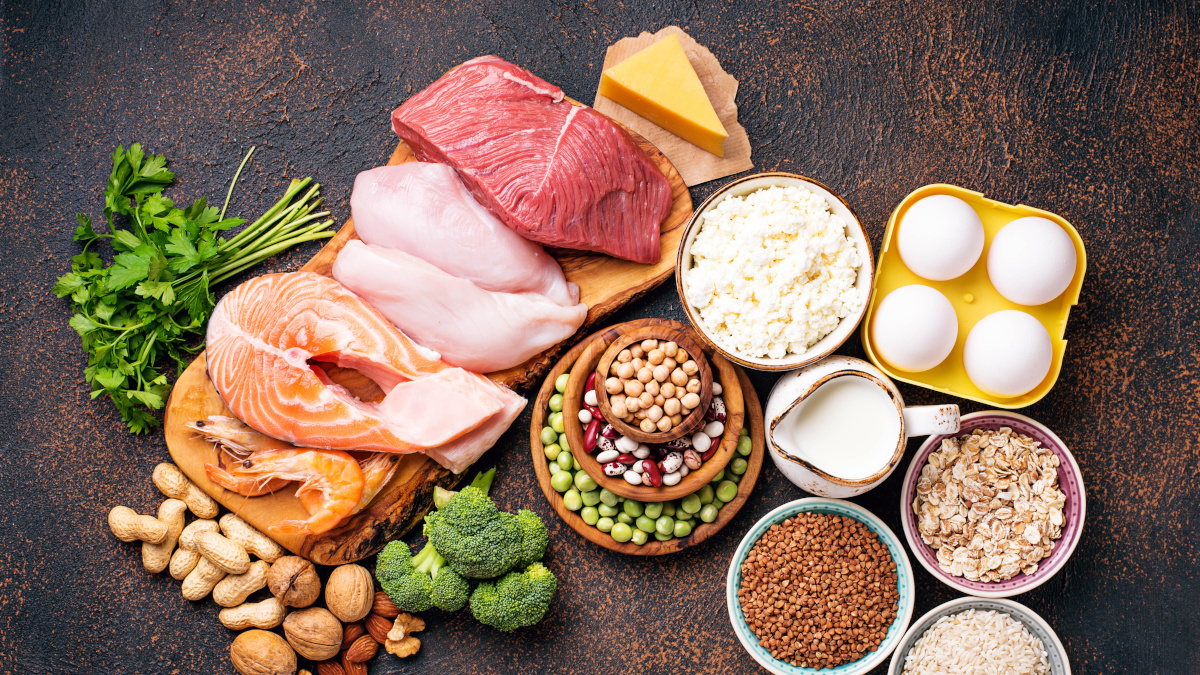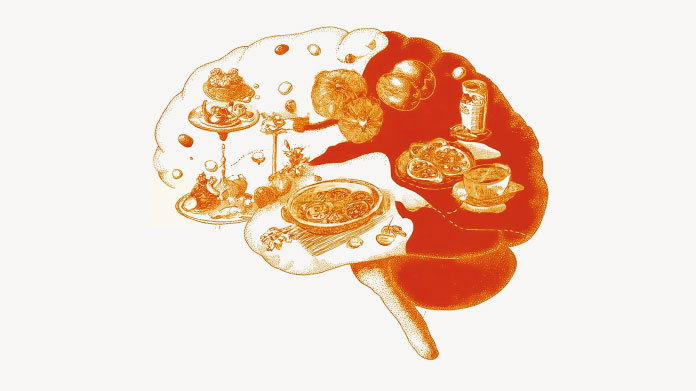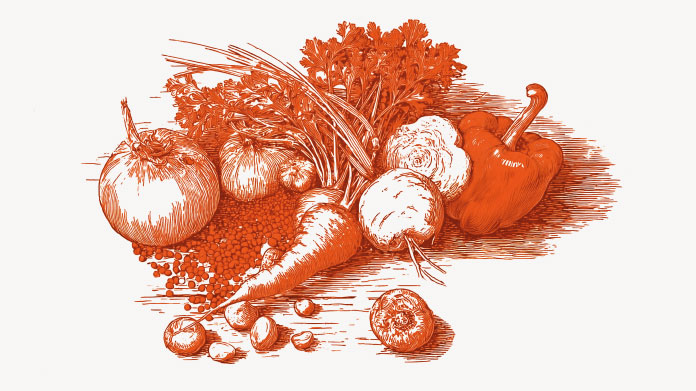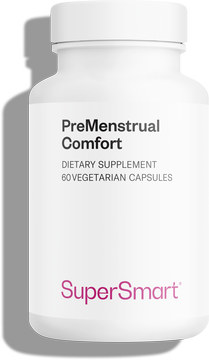High-protein diet: definition, effects and sample menus
The high-protein diet encourages weight loss while maintaining muscle mass. How does it work? What kind of menus are involved?

What exactly does a high-protein diet consist of?
Like most weight-loss diets, the high-protein regime is based on reducing calorie intake.
Let’s remember that for the body to work properly, it needs a daily intake of macronutrients which are used for building cells and providing them with the energy they need to function. These macronutrients consist of:
- carbohydrates (including sugars) ;
- lipids (found in fats and oils) ;
- and proteins (found in meat and fish, amongst others.)
By focusing on protein-rich foods and reducing intake of carbohydrates and lipids, the high-protein diet produces a deficit in calories which, after a few days, results in weight loss(1).
What’s the connection between prioritising protein and losing weight?
For a diet to result in weight loss, it has to reduce daily calorie intake. A deficit of 500 kcal a day is believed to be the right level because it is large enough to force the body to draw on its reserveswithout leading to fatigue or hunger.
Each macronutrient has its own particular calorie load.
- 1g of lipids = 9 kcal;
- 1g of carbohydrates = 4 kcal;
- 1g of protein = 4 kcal.
It’s also important to understand that the process of digesting proteins uses up more energy than that of carbohydrates or lipids. This means that proteins are not only one of the nutrients with the fewest calories, but that the body burns more calories when digesting them (2). The high-protein diet was developed on this basis.
What are the effects of a high-protein diet?
The advantages
As this diet produces a deficit in calorie intake while maintaining a a high level of protein, it results in weight loss without any significant loss of muscle mass. Indeed, compared with a typical slimming diet, the high-protein approach substantially reduces muscle breakdown .
In addition, it maintains the sensation of satiety. The fact that you don’t feel hungry in between meals means you can space them out and you won’t get the urge to snack(3). Losing weight without feeling hungry makes it easier to stick to the diet over the long term.
The cravings we often experience when dieting are caused by fluctuating pancreatic hormone levels in the blood. By maintaining a low carbohydrate intake these levels stabilise and the urge to snack in between meals recedes (4).
The disadvantages
The main downside of this diet is that, in order to work well, it must be followed to the letter. You may therefore have to eat differently from those around you
When following a high-protein diet, the kidneys have to work harder than normal. So make sure you drink plenty of water to compensate for your increased protein intake.
In addition, given that the potential risks of excessive protein consumption have yet to be clearly determined, be sure to seek medical advice before starting this diet (5).
What can you eat on a high-protein diet?
The secret of this diet lies in ensuring the correct proportions for each type of macronutrient. It’s important to remember that at each meal, you need to eat three portions of protein, one of carbohydrates and one of lipids. This 3:1:1 ratio forms the basis of this new nutritional balance.
Which foods contain protein?
Proteins are the primary elements that make up meat and fish. They are also found at significant levels in seafood, eggs, dairy products, nuts and some vegetables.
To increase your protein intake, you can also incorporate whey protein into your diet (for example, with our Undenatured Whey Protein Isolate product).
What does a typical menu look like?
| Breakfast | Lunch | Dinner |
|---|---|---|
|
|
|
Which supplements should you take with this diet?
Note: following a high-protein diet involves reducing your intake of certain foods and may therefore lead to dietary deficiencies. In order that you don’t fall short on vitamins and minerals, it’s a good idea to take a supplement that provides certain vitamins, magnesium and calcium. We’d suggest choosing a multivitamin supplement (such as Daily 3). Make sure too that you get enough potassium and sodium.
By reducing your carbohydrate consumption, you also risk an inadequate fibre intake. So try to obtain it from other foods or from supplements (such as organic acacia gum or fructo-oligosaccharides, an excellent source of fibre).
It’s important to bear in mind that the body also needs lipids and that this diet involves a significant reduction in lipid intake. You can, however, supplement with omega-3, a fatty acid essential for good health (the best choice is Super Omega 3, the purest and most stable EPA/DHA supplement available).
References
- Moon J, Koh G. Clinical Evidence and Mechanisms of High-Protein Diet-Induced Weight Loss. J Obes Metab Syndr. 2020 Sep 30;29(3):166-173. doi: 10.7570/jomes20028. PMID: 32699189; PMCID: PMC7539343.
- Elmadfa, I.; Leitzmann, C.: « Ernährung des Menschen », Éditions Eugen Ulmer 2015, p. 142 ff.
- « Sättigung (Physiologie) », Melzer, M. (2018): « „Was Hunger auslöst, was satt macht »,
- Antonio J, Ellerbroek A, Silver T, et al. A High Protein Diet Has No Harmful Effects: A One-Year Crossover Study in Resistance-Trained Males. J Nutr Metab. 2016;2016:9104792. doi:10.1155/2016/9104792
- Bilsborough S, Mann N. A review of issues of dietary protein intake in humans. Int J Sport Nutr Exerc Metab. 2006 Apr;16(2):129-52. doi: 10.1123/ijsnem.16.2.129. PMID: 16779921.
Keywords
4 Days
Great customer service - responsive …
I ordered from them and my item was unavailable for sometime. I was super happy when they reactivated my order and shipped my item which arrived very quickly. Great customer service.
Ruth Rueter
5 Days
Super fast shipping
Super fast shipping
Donald Borling
8 Days
Reputable companysearch and the number of…
The research and the number of selection of products.
NAKHJAVAN Shervin
21 Days
The Anti Aromatase is a great product
The Anti Aromatase is a great product. You just need to have constant inventory. Recently this product has been out of stock.
GEORGE Verne
22 Days
Great help on chat
Great help on chat. Knowledgeable and friendly.
Jason Argos
26 Days
Customer service was fast and friendly.
Customer service helped to stop the transaction process of the subscription. I appreciated that.
Greenie
26 Days
I order here due to the high quality of…
I order here due to the high quality of the products and the quick delivery of items - thank you
Barbara J
27 Days
SuperSmart's Eye Pressure supplements: highly recommended!
I purchase SuperSmart's Eye Pressure supplements regularly for over 5 years, and gotta say they are truly a wonderful product for my Glaucoma. Highly recommended if you have eye pain from your Glaucoma.
D. Martinez
32 Days
Quick service
Quick service
MONELL
33 Days
Speedy service.
Speedy service.
ROSENTHAL Marvin
36 Days
Clear website- Efficient
Clear website. Excellent search engine and fast delivery!
Mohamad Hussein
39 Days
They have great products.
They have great products.
Vickie
39 Days
Great Shipping Time!
You Have A Great Shipping Time! Praise The Lord!
DMHoge
41 Days
Doctor Recommended!
Good pricing, very good availability, doctor recommended (couldn't find what I needed anywhere else), and it took only a week to arrive (which I can't complain about).
Al
42 Days
Great product and fast shipping
Great product and fast shipping
Marie





